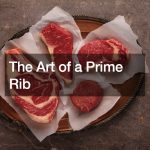
Creating dioramas and miniatures is an engaging and rewarding hobby that allows you to bring intricate scenes to life. For beginners looking to elevate their creations, mastering a few techniques recommended by model scenery & static grass experts can make all the difference. Here are some tips to take your dioramas and miniatures to the next level, focusing on realistic bases and the use of static grass.
Materials You’ll Need:
- Dirt: Use fine, sifted dirt for the best results. You can source this from your own backyard or purchase specialty model dirt from hobby shops or online retailers like Amazon.
Recommended brands include WWS and Scenic Express, that you’ll probably find in your local hobby store.
- Playground Sand: Fine-grain sand is ideal for adding texture. You can find playground sand at most hardware stores or garden centers. If you prefer, you can also use model railroad sand from brands like Noch or Busch.
- Plaster: Plaster of Paris is a good choice for creating a sturdy base. It’s available at craft stores like Michaels or Hobby Lobby, as well as online. You can also use specialty modeling plasters such as Woodland Scenics Lightweight Hydrocal.
- Matte Mod Podge: This versatile adhesive and sealant is essential for creating the dirt paste. It’s available at craft stores and online retailers. Matte Mod Podge provides a non-shiny finish, which is crucial for realism.
- Water: Regular tap water is sufficient for mixing.
Step-by-Step Process:
- Mixing the Ingredients:
- Dry Ingredients: Start by combining equal parts of dirt, sand, and plaster in a container. For example, use one cup of each.
- Container Size: Ensure your container is large enough for mixing. If it becomes too small, transfer the mixture to a larger one to ensure thorough blending. Using a mixing bowl or a plastic tub works well.
- Creating the Paste:
- Gradual Mixing: Gradually add Matte Mod Podge and water to the dry mix. There’s no need for precise measurements; instead, focus on achieving the right consistency.
- Consistency: The mixture should be chunky but spreadable. Think of a thick paste that’s not runny but can be easily applied with a spoon or spatula. Start with a 1:1 ratio of Mod Podge to water, then adjust as needed.
- Applying the Paste:
- Application Tool: Use a spoon or spatula to scoop the paste and apply it to your diorama base. A foam board or a piece of styrofoam makes an excellent base.
- Spreading: Use a cheap chip brush or an old paintbrush to spread the paste evenly over the base. Ensure full coverage, creating a uniform layer that mimics natural terrain.
- Adding Dry Dirt:
- Sprinkling: While the paste is still wet, sprinkle a layer of dry, sifted dirt over it. This step adds texture and helps the paste dry faster.
- Techniques: Lightly press the dry dirt into the paste to ensure it adheres well. You can also shake off any excess dirt once the paste has dried.
Where to Source Materials:
- Local Stores: Craft stores like Michaels, Hobby Lobby, and Joann Fabrics often carry most of the materials you’ll need, including Matte Mod Podge, plaster, and sometimes fine sand.
- Online Retailers: Websites like Amazon, eBay, and specialized hobby sites like Scenic Express and Woodland Scenics offer a wide selection of modeling supplies.
- Hardware Stores: Home Depot, Lowe’s, and other hardware stores are great places to find playground sand and other bulk materials.
3. Painting for Enhanced Realism
Painting is crucial for adding depth and variation to your diorama. Here are some tips to make your scenery stand out:
Materials:
- Tamiya acrylics in buff and flat earth
- Airbrush
Step-by-Step Process:
- Adding Dead Patches: Use an airbrush to apply flat earth paint to sections of the static grass. This creates realistic dead patches and adds texture.
- Highlighting Dirt: Apply buff-colored paint to the dirt areas for a dry, dusty look. This enhances the contrast and makes the scene more visually interesting.
Final Touches
To ensure your diorama looks cohesive and professional:
- Blend Colors: Use the airbrush to subtly blend different colors. This helps in creating a seamless transition between grass and dirt.
- Experiment: Don’t be afraid to experiment with different colors and techniques. The more you practice, the better your results will be.
By following these tips, beginner hobbyists can significantly enhance the realism of their dioramas and miniatures. Remember, the key is in the details, and with patience and practice, you can create stunning scenes that capture the imagination. For more advanced techniques, consider exploring tutorials online to continue improving your skills.
.



